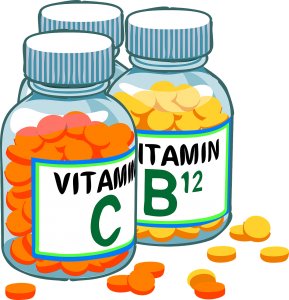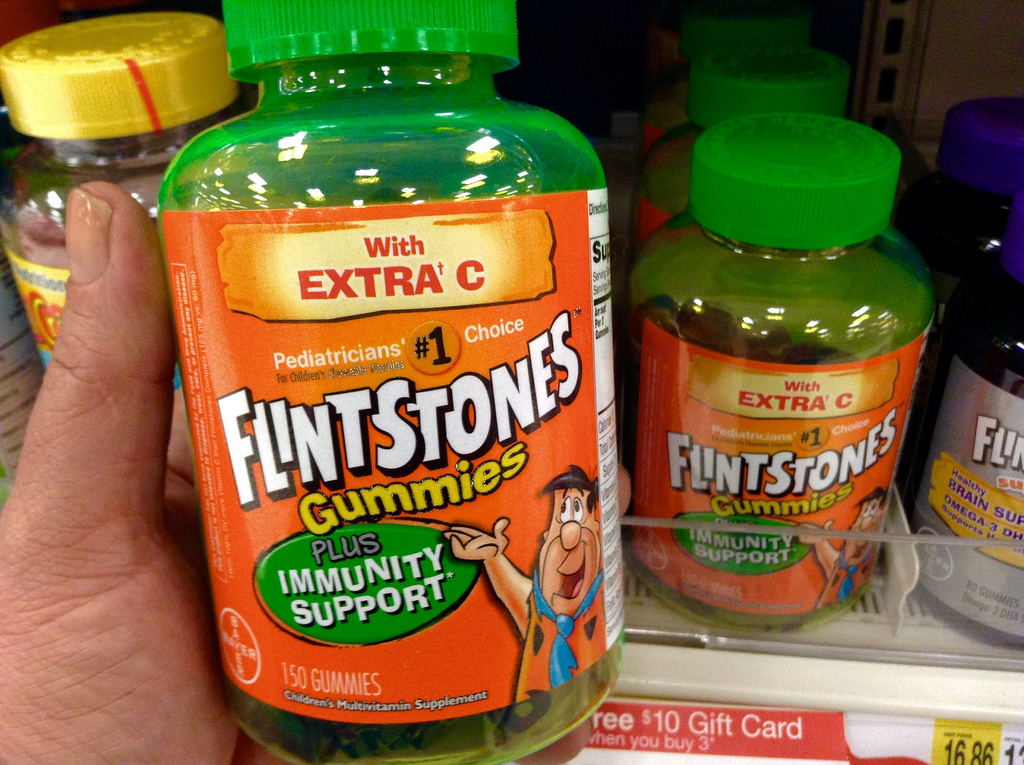The History of Flintstone Vitamins
At the eve of the 20th century, the discovery of vitamins changed healthcare as we know it. Tons of diseases caused by vitamin-deficiency could be cured almost immediately, and people began to see them as a miracle cures. Originally, doctors would just prescribe food with certain levels of vitamins, but by the 1930’s and ‘40’s, they figured out how to get the good stuff in pill form. Fears during WWII and food shortages magnified the public’s infatuation with vitamins, and a pill-popping culture was born.
Flintstone and Chewable Vitamins?

We’re used to popping vitamins like candy
In 1960, “The Flintstones” premiered. That was the same year that Miles Laboratories created the first chewable vitamin for kids. By now, vitamins in pill form weren’t being studied by scientists anymore. Instead, they were shelf stables of big companies like Kroger, and were barely regulated by the FDA. Vitamins are classified as “dietary supplements,” and the FDA does not review them for effectiveness or safety before they hit the market. This made it much easier for companies to bring tons of options to people, and even though there are only 13 vitamins that humans need, there are hundreds of thousands of choices for consumers.
Why Flintstone Vitamins?
In 1968, eight years after the cartoon’s premiere and creation of Chocks (the first chewable kids’ vitamin), Miles and “The Flintstones” released a line of vitamins with fruity flavors that were shaped like the characters. The idea was that kids would be excited to take the pills because they were similar to candy. Other cartoon characters have followed, from Bugs Bunny to Spongebob Squarepants. Miles, which was eventually bought by Bayer, would go on to make six Flintstones vitamins, including Flintstones Complete, Flintstones with Iron, and Flintstones Plus Immunity Support.

As a marketing gimmick, Flintstones chewable have been hugely successful.
For years, there was one notable character absent from the vitamin bottle. Betty, who was married to Fred Flintstone’s best friend Barney, was not among the characters. The manufacturers said that her waist was too thin and would break. They reasoned that people wouldn’t care because in vitamin form, she would look just like Wilma, anyway. They were wrong. For years, there was always a small fan base that wanted Betty added, but it took Rosie O’Donnell to change things. She played Betty in 1994 and asked why there wasn’t a vitamin. A marketing agency hired by Bayer set up voting booths in malls across America that looked like prehistoric huts, and had consumers call a 1-800 line to decide whether or not Betty should be added to the vitamin roster. The turnout was huge, and 91% of them wanted Betty. In 1995, she was finally immortalized as a chewable vitamin.
Flintstones Marketing Gimmick
As a marketing gimmick, Flintstones chewable have been hugely successful. Even with the show long off the air and rarely watched anymore, you’d be hard-pressed to find anyone who doesn’t remember taking Flintstones vitamins, or who can at least recognize them. Are they actually that healthy, though? The ingredients include sorbitol, a sweetening agent that can cause stomach cramps and diarrhea, and fructose, a form of sugar that’s been linked to diabetes and obesity.
Vitamins in pill form aren’t really that healthy, and people are much better served getting their nutrients from the source: food. The vitamin business is ruled by marketing and packaging, and often misleads the public about their value. While most vitamins won’t hurt you, they also don’t help you very much, though it depends on your health status, the type of vitamin, and the brand. Always talk to your doctor first if you’re curious about supplements and vitamin deficiency.




